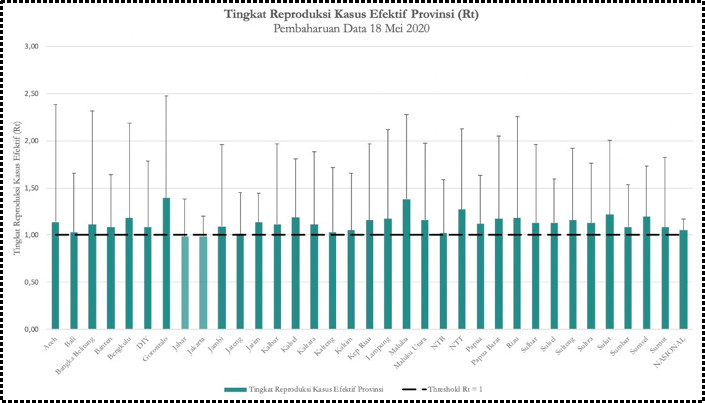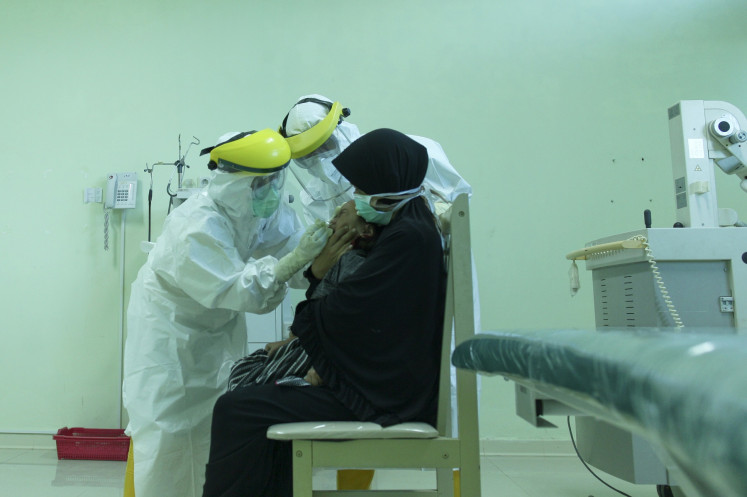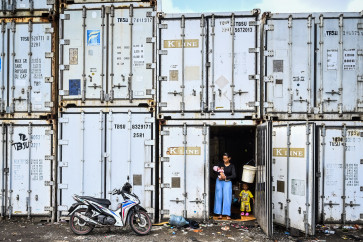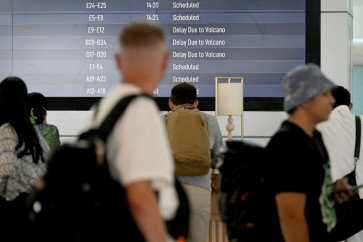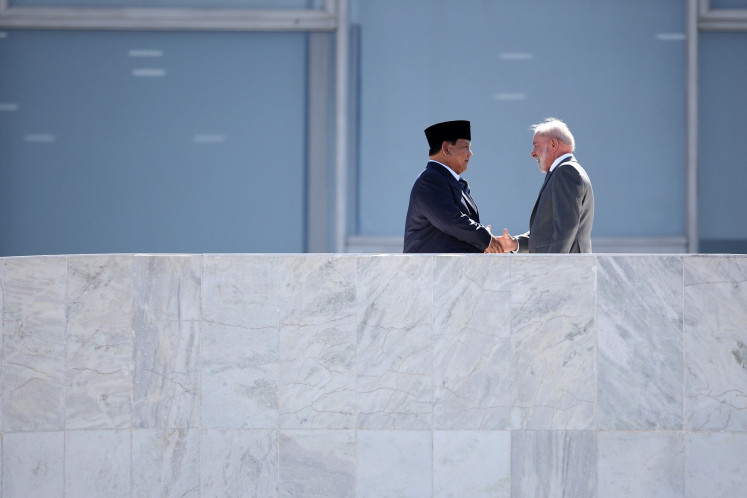Popular Reads
Top Results
Can't find what you're looking for?
View all search resultsPopular Reads
Top Results
Can't find what you're looking for?
View all search resultsIndonesia’s R0, explained
In the past couple of weeks, President Joko “Jokowi” Widodo and other government officials have repeatedly cited the R0 – pronounced R-naught – of COVID-19 in Indonesia as the country gears up to enter the “new normal” period to restart the economy. But what is the R0 and what does it say about the current national health crisis?
Change text size
Gift Premium Articles
to Anyone
I
n the past couple of weeks, President Joko “Jokowi” Widodo and other government officials have repeatedly cited the R0 – pronounced R-naught – of COVID-19 in Indonesia as the country gears up to enter the “new normal” period to restart the economy.
Jokowi said on Wednesday that the R0 in Jakarta had dropped to below 1 and explained that the government should continue efforts to lower it.
Quoting data from the National Development Planning Board (Bappenas), Coordinating Economic Minister Airlangga Hartanto said on Wednesday that the R0 in some regions had fallen below 1.
Achieving an R0 below 1 was also mentioned in several new regulations and guidelines as a prerequisite for transitioning to the new normal.
But what is the R0 and what does it say about the current national health crisis?
What is R0?
R0 refers to a disease’s basic reproduction number, while RT refers to the R0 at a given time. Both indicators measure how contagious an infectious disease is.
R0 represents the expected number of new cases that might be generated from one infection case, and the R0 can differ from region to region.
The average R0 for the seasonal flu in the United States, for example, is 1.3. This means that, for every 1,000 people with the flu, 1,300 others will become infected. These 1,300 people will in turn infect another 1,690 people, who will then infect another 2,197 people and so on. After 10 generations of infections, over 40,000 people would have the flu.
An R0 above 1 means that an outbreak will grow exponentially, while an R0 below 1 means that an outbreak in a certain area will peter out, as each infected person will infect fewer than one other person on average.
World Health Organization documents published in February estimated an R0 of 2 to 2.5 for COVID-19 in Hubei, China, which is said to be the ground zero of the disease.
Read also: 50 days of Indonesia’s partial lockdown. Is it enough for the ‘new normal’?
How is it calculated and what affects it?
Windhu Purnomo, an epidemiology expert at Airlangga University in Surabaya, East Java, said that three variables determined a disease’s R0 and RT: its transmission method, its period of contagion and the rate of physical contact among infected individuals.
According to the WHO, COVID-19 is transmittable through respiratory droplets and has a contagious period of 16 to 19 days.
“While we cannot manipulate the method of transmission, the contagious period can be shortened by immediately treating infected patients. Social distancing measures can also reduce the amount of physical contact,” Windhu told The Jakarta Post.
Windhu estimated that the current RT of COVID-19 in Indonesia was around 1.1.
Estimates of RTs in Indonesia's 34 provinces as of May 18, 2020. (Courtesy of the National Development Planning Board (Bappenas)/--)Panji Fortuna Hadisoemarto, an epidemiology expert from Padjadjaran University in Bandung, West Java, said that Indonesia’s geographic and population diversity also needed to be accounted for and the RT of around 1.1 only represented a national average.
“It’s meaningless to count the reproductive number of Indonesia as it is very vast and heterogeneous,” Panji told the Post on Wednesday, adding that Bappenas data as of May 18 showed the RT varied widely between provinces.
Low testing rate may skew R0, RT estimates
Windhu raised concerns that any estimates of Indonesia’s RT may be inaccurate due to the low levels of COVID-19 testing.
He said that Indonesia’s daily testing capability, which the government claimed had reached 12,000, was not yet stable due to several cases of reagent shortages, adding that the country should at least be able to perform 20,000 tests per day.
As of Monday, Indonesia had conducted 333,415 swab tests for COVID-19, a testing rate of 1,235 tests per 1 million people, one of the lowest testing rates in the world. In comparison, neighboring countries Malaysia and Singapore have testing rates of 17,000 and 57,000 tests per 1 million people respectively.
Medical workers take swab samples from a patient under surveillance (PDP) in Tarakan General Hospital in North Kalimantan on Tuesday, April 28, 2020. The samples will be tested using a polymerase chain reaction (PCR) testing method to determine whether the patient has contracted the novel coronavirus. (Antara/Fachrurrozi)Some regions, such as Jakarta, have higher testing rates than the national average, which may lead to more accurate estimates of the RT. Bappenas head Suharso Monoarfa said last week that the capital had tested more than 5,000 people per 1 million people.
Other regions, however, have tested far less. Local news site analisaaceh.com, for example, reported last week that Aceh – a province with one of the lowest numbers of confirmed COVID-19 cases in the country – had only conducted 303 COVID-19 swab tests, a testing rate of 57 tests per 1 million people.
R0 and the new normal
Government officials have cited the relatively low estimates of R0s and RTs in several regions as justification for entering the so-called new normal by reopening public and commercial facilities and resuming economic activities, albeit with certain health protocols.
Windhu, however, urged caution.
While he estimated that Indonesia’s current RT was around 1.1, he said it would continue to increase or decrease depending on the measures taken to contain the outbreak. For example, tightening or loosening physical distancing measures could reduce or increase the RT.
“If the RT is 1.1 now and we suddenly relax [social restrictions], it could spike again. We also have to observe how long it remains at 1.1,” Windhu said. “If it remains [at 1.1] for around two weeks, then it will be fine, but we should not loosen [social restrictions] if it continues to fluctuate.”
University of Indonesia epidemiologist Syahrizal Syarif, meanwhile, advised against using R0 and RT estimates as policy reference altogether due to the suspected inaccuracy of the available data in the country.
Instead, he said the government could refer to the consistent daily decrease of new COVID-19 cases as a more accurate indicator for loosening social restrictions.
“If new cases continue to decrease for more than 14 days at minimum, then we can safely say that the epidemic is under control,” he told the Post.
However, Syahrizal also said that more testing was needed so that the daily recorded cases could better reflect the real-world transmission rate.


